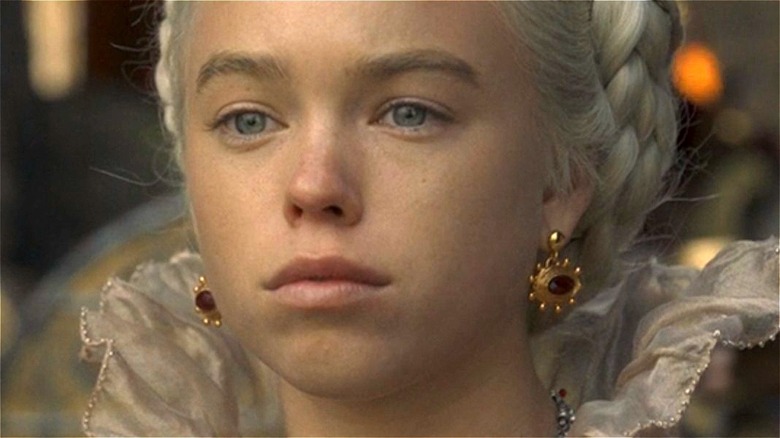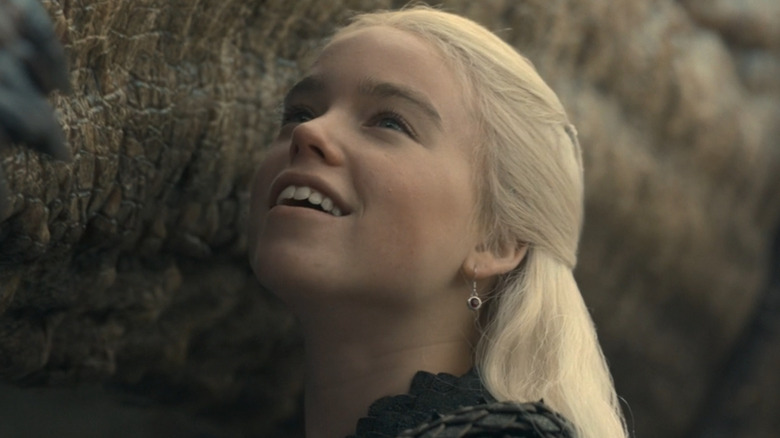House Of The Dragon's Milly Alcock Explains The True Inspiration Behind Rhaenyra
When tapped to play an important role on an exceptionally hyped television series, which is a direct spin-off from one of the most popular shows of all time, it is probably a good idea to ground one's character in the performance. "House of the Dragon" is the latest helping of Westeros for those of us who crave political subterfuge, betrayals, human drama, and, of course, giant fire-breathing dragons. This new show is a prequel to the vaunted "Game of Thrones" series and takes play well over a century before the events involving the rapid ascent of Daenerys Targaryen (Emilia Clarke) to the Iron Throne. As where Daenerys is one of the few remaining pureblood Targaryens left in the world in "Game of Thrones," her command of dragons makes her a nigh unstoppable force.
Long before her birth though, the Targaryens are the dominant force in the world, with dragons being far more commonplace. The opening moments of "House of the Dragon" features the young Princess Rhaenyra Targaryen (Milly Alcock) soaring through the air on her saddled dragon, which quickly establishes the symbiotic relationship between Targaryen and the mythological beasts. As the daughter of King Viserys (Paddy Considine), Rhaenyra must balance her duties with her own wants and desires, which has got to be a balancing act when you have a pet dragon. However, it seems as if the actor who plays Rhaenyra channeled some rather famous performances, so whom did she use as inspiration when it came to her own take on the character?
Milly Alcock drew from two famous performances to craft her acting
Speaking with the New York Post, Milly Alcock explained that she hadn't watched "Game of Thrones" before her casting, but once she was tapped to act in "House of the Dragon," she watched the entire series in two weeks and began to understand why "Game of Thrones" was so popular. She added that she liked Emilia Clarke's Daenerys Targaryen performance, but she didn't let that affect her role. She noted that there might be some superficial similarities, but in truth, she drew from two different outside sources. She then clarified her inspiration by saying, "Cate Blanchett in 'The Golden Age,' and Audrey Hepburn in 'Roman Holiday.' If you could combine those two women together, I think that is Rhaenyra. She's witty and cheeky, but she has to perform constantly and live up to that regal role. But, you can see under the surface, she's quite uncomfortable in her skin."
Considering Alcock's statement, it makes perfect sense why she chose these two characters. Audrey Hepburn's character of Ann in "Roman Holiday" is a princess who tires of the burdens of royalty and takes her own initiative to see and experience Rome while shirking her prescribed duties. Likewise, to draw from Cate Blanchett's character of Queen Elizabeth I in "Elizabeth: The Golden Age" also tracks as the character is quickly thrust into plots and conspiracies that involve rival countries and lines of succession. Between these two characters, Alcock definitely sounds like she understands her character's motivations very well.

